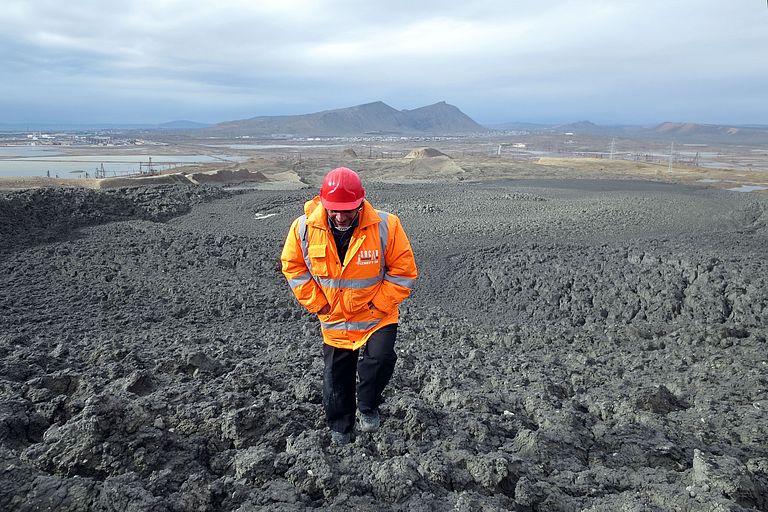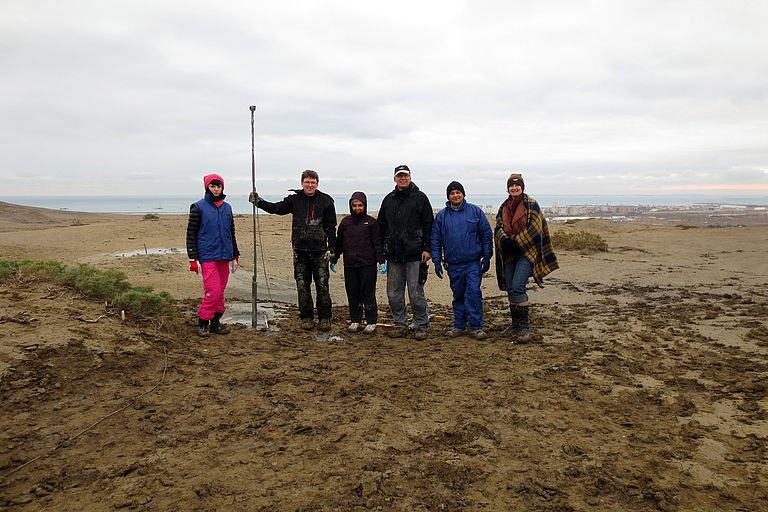Ocean researchers at the Caspian Sea
GEOMAR scientists investigate mud volcanoes in Azerbaijan
Admittedly, the Caspian Sea is not an ocean. Nevertheless, it is the largest lake on Earth. Moreover, there are many characteristics which it has in common with the world's oceans. Among those are certain geological structures at which eruptions of mud, saturated with gas and water from deeper sediment strata, can be observed. During this process mud cones are formed which are quite similar to volcanoes. This is why such formations are called mud volcanoes. They are found at the continental slopes in the Atlantic Ocean, the Indian Ocean and the Mediterranean – but also in the coastal regions of the Caspian Sea. “In fact, this region has many mud volcanoes which are located on land, thus they are far better accessible for our investigations than the submarine ones" says Mark Schmidt from the GEOMAR Helmholtz Centre for Ocean Research Kiel. Accompanied by two colleagues, he spent a week in Azerbaijan in order to take samples from a mud volcano in the vicinity of the Azeri capital Baku.
„One of the reasons we are so interested in mud volcanoes is that in central Asia they are regarded as a main source of atmospheric methane", Schmidt explains. The gas venting from mud volcanoes may contain up to 90% methane. They are thus relevant to climate. As a greenhouse gas, methane has about 20 times the effect of carbon dioxide. In addition, methane is easily flammable and may thus pose a natural threat. As recently as September this year, the mud volcano which was now sampled by the Kiel scientists erupted and went ablaze.
Apart from that, however, mud volcanoes may indicate deep oil and gas reservoirs. This is reflected by emitted methane, which chemically is, in fact, natural gas, and by bitumen (earth pitch) and oil which can be sampled from the cones of mud volcanoes. “Azerbaijan was one of the first countries in the world to build up oil production in an area of active mud volcanism”, Schmidt says. Yet, geological, chemical and physical processes must be well understood to ensure safe production.
The GEOMAR scientists have been interested in the processes taking place inside mud volcanoes for some time. A large-scale project was carried out from 2007 to 2011 to examine mud volcanoes in the western Nile delta. In Azerbaijan, they have the opportunity to perform comparative studies on hydrocarbon vents on mud volcanoes on land as well as in shallow areas of the Caspian Sea. For this purpose, Prof Ibrahim Guliyev, Director of the Geology Institute of Azerbaijan, signed a cooperation agreement with GEOMAR during the visit of the scientists from Kiel. A first joint sampling campaign in the Caspian Sea is planned for 2013. “We greatly appreciate this opportunity. It will allow us to access a scientifically very interesting inland lake and draw comparisons to oceanic processes”, states ocean scientist Dr. Schmidt.
Pictures in higher resolution:
Both indicator for resources and natural hazard: the Lokbatan mud volcano near Baku in Azerbaijan: Photo: M. Schmidt, GEOMAR
Scientists from Germany and Azerbijan on the Lokbatan mud volcano. Photo: M. Schmidt, GEOMAR
Contact:
Jan Steffen (GEOMAR, Communications & Media), Tel.: 0431 600-2811, jsteffen(at)geomar.de




